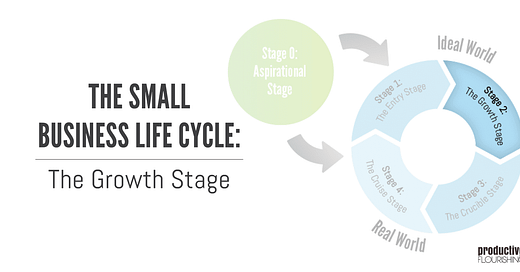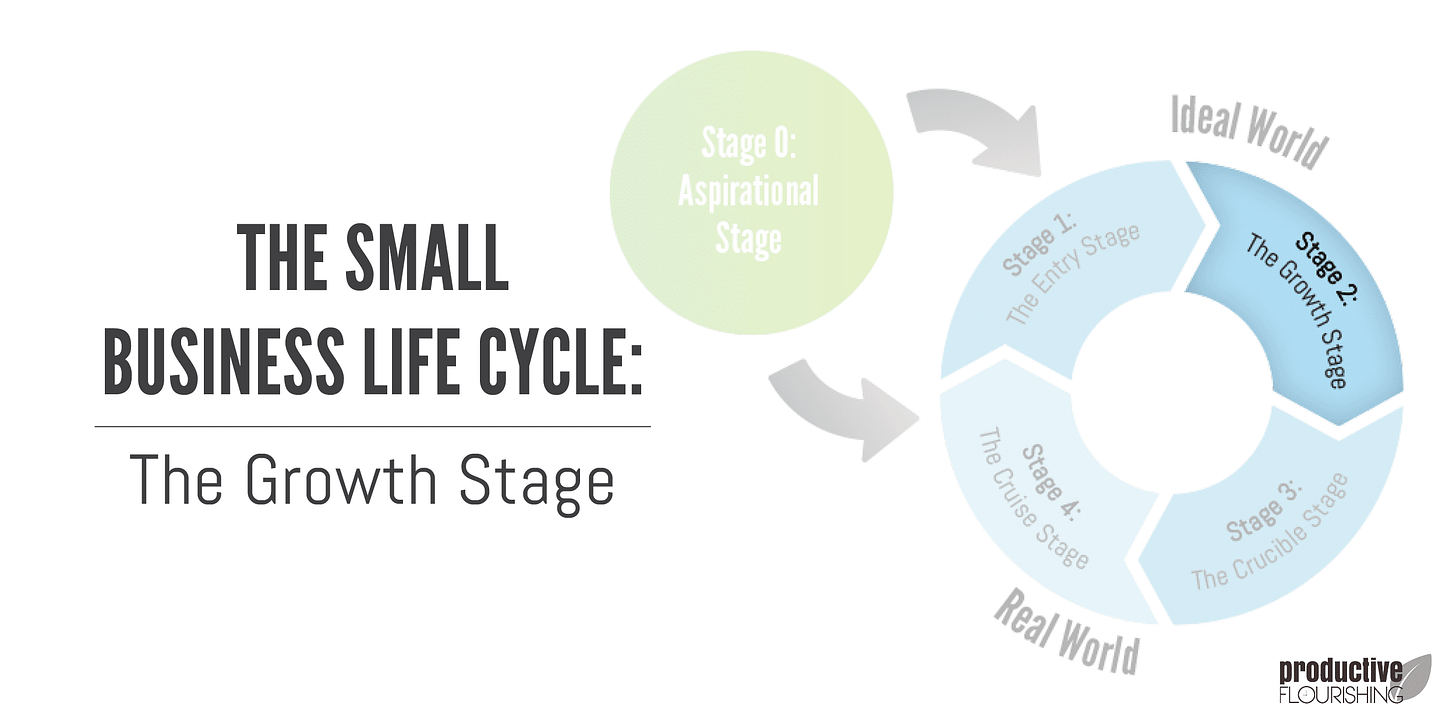Editor's note: This is Part 3 of the Small Business Life Cycle series. If you'd like to start from the beginning, check out the Aspirational stage.
Stage 2, as you remember, is the Growth stage. The business is already going, you have customers and market demand, you’re feeling excited, and business is taking off. I like to refer to this stage as “riding the rocket.” It’s like you’re holding onto this rocket, you’re throwing in as much fuel as possible, and you’re going faster and faster and faster — and that’s fun. That’s why this is the stage so many entrepreneurs and business builders love to stay in.
Challenges of Stage 2
The first challenge is that it's hard to ride a rocket. The faster the rocket goes, the tighter you have to hang on to it. The higher it goes, the harder it is to stay on. And unfortunately, rockets aren't meant for long-term flying.
The second major challenge is you have too many ideas. (Click to tweet — thanks!) Because you've had a home run in one area, you start trying to replicate that all over the place. Ideas are streaming, your confidence is up, your excitement is up, and there is too much going on. A lot of Stage 2 entrepreneurs get overwhelmed and have a hard time figuring out what to do, because they simply have too many ideas. This is fundamentally different from Stage 3, when entrepreneurs have figured out how to manage having too many ideas but generally have too much work.
Another challenge is that you're not "there" yet. You're not quite playing with the big dogs yet, and they may not be paying any attention to you. You don't have the partnerships, audience, or tribe formed around what you do. You're having great success, but you're still just not quite there, and you kind of know it. You're saying things like, "If only such-and-such would pay attention" or "If only such-and-such would happen, then I would be there." Wherever there is.
Strengths of Stage 2
Let's talk about the strengths of Stage 2. The biggest strength is that it's fun. It's fun to have an idea and to have it get picked up, accepted, and validated by the market. It's fun to have people interested in what you do. It's fun to be able to provide a solution for people who didn't have one; all of that is a blast. Again, it's why so many entrepreneurs want to stay in Stage 2.
The second strength is that there are a lot of possibilities. Your business still has a lot of room to grow, a lot of possible friendships and partnerships to make, and a lot of capacity for new things you can try because you're not at full capacity. Paradoxically, the faster your rocket goes, the fewer options you have because you can’t turn it or stop it easily; Stage 2 is that sweet spot between going fast enough to have fun but not so fast and far that you find yourself on a fixed path.
Another strength is that you don't have those pseudo-entrepreneurial-existential-crises about what you should be doing. You're in the moment, you're rocking it, and there's a feeling in Stage 2 that there's nothing on earth that you were meant to do other than this. Stage 2 is infectious.
The Inconvenient Truth
The inconvenient truth at Stage 2 is that you can't keep going like this. You can't continue to throw more and more fuel into the rocket and go faster and faster. At a certain point, you're going to fall off that rocket.
The Way Ahead
The way ahead is to start focusing on your market niche or specialty. In other words, start saying no to the many different possibilities and figure out what it is you're doing, with whom, and for what.
The Catalytic Moment
The catalytic moment that moves you from Stage 2 to Stage 3 occurs when market demand exceeds your ability to deliver. Whatever you're doing is working, you can't do any more than you're currently doing, and there are so many opportunities available for your business that you don't have the systems, people, or processes in place to handle them long-term. When this happens, you move into the stage of business that almost every entrepreneur loathes.
Continue in the series by reading about the Crucible stage.
I expanded on this post in my best-selling book, The Small Business Life Cycle. In it, I discuss the steps that need to be taken at each stage. To learn more about how to transition and thrive in your small business or microbusiness, get your copy here.





